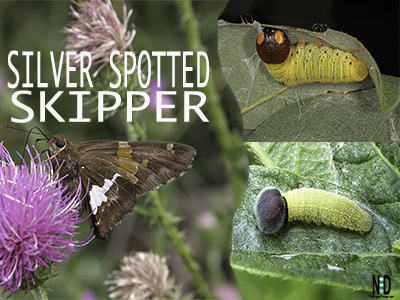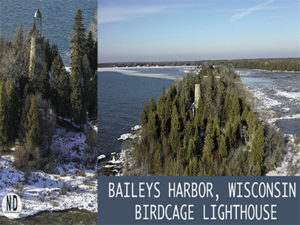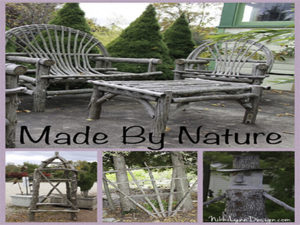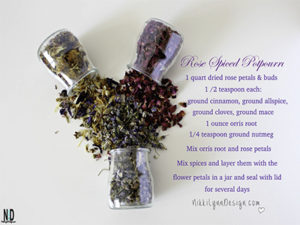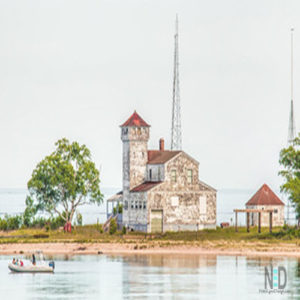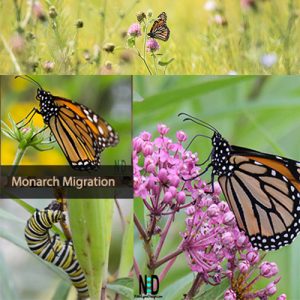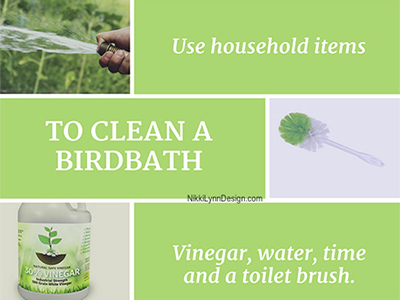The silver-spotted skipper is a brown winged skipper with yellowish-orange square and rectangular patches on its wings. The body of this skipper is dark brown and hairy.
General Information
| Common Name | Silver Spotted Skipper |
| Scientific Name | US- Epargyreus clarus Europe – Hesperia comma |
| Common Places Found | United States. It extends into Canada. In Europe known as Hesperia comma Found in fields, gardens, and forest edges. |
| Plants & Trees | Butterfly – nectar; love red, pink, purple, flowers. Include common milkweed, red clover, buttonbush, cow vetch, and thistles. Caterpillar – herbs, vines, shrubs, and trees in the pea family. |
Silver Spotted Skipper Butterfly

The silver-spotted skipper Epargyreus clarus is one of the most recognized skippers fluttering in fields, gardens, and forest edges.
They enjoy collecting nectar in open fields of flowers.
This skipper is dark chocolate-brown, with a row of yellow spots extending across the fore wing, and with a large, silvery-white spot on the lower side of the hind wing.
An easy way to identify the skipper is to look for the large white patch on its hind wing.
They fly in the daytime and dart suddenly from place to place. When at rest they usually hold the wings erect in a vertical position like butterflies ; often the fore wings are held while the hind wings are extended horizontally. The antennae are threadlike, and enlarged toward the tip ; but in most cases the extreme tip is pointed and recurved, forming a hook. The abdomen is usually stout, resembling that of a moth rather than that of a butterfly.
Silver Spotted Skipper Caterpillar
The silver spotted caterpillar is yellow with thin black lines, a redhead, and orange feet and orange spots.
The two large, prominent anterior orange spots, mimic eyes but are not.
Skippers lay their eggs upon the upper surface of the leaflets of locusts and other plants of the legume family. In less than a week each egg hatches into a little caterpillar with a very large head and a comparatively large body, tapering rapidly toward the hind end.
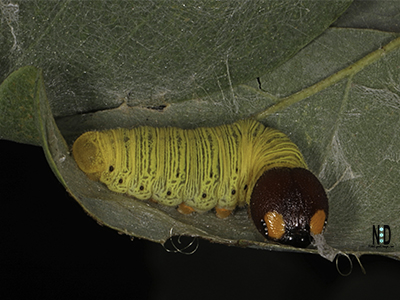
Arched Dome Becomes Home
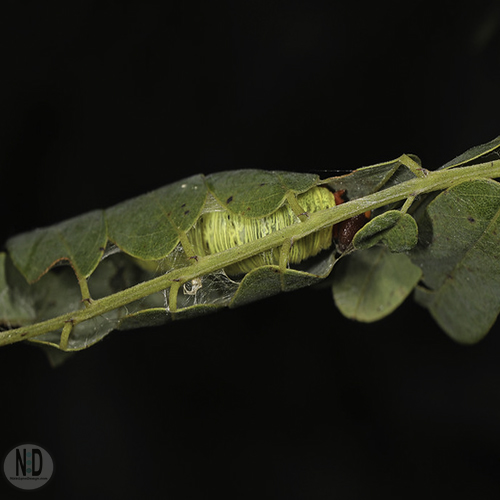
This little creature cuts out from one side of the leaf a small round flap which it turns over and binds in place by silken threads to make a home for itself.
The little home usually has an arched dome held in place by strands of silk running from the eaten fragment to the surface of the leaf. It remains an occupant of this home until after the second molt.
It leaves one end open as a door out of which the caterpillar crawls to feed at night upon nearby leaves, returning to the house for shelter during the day.
They spin silken cocoons within which they change to chrysalids. In the Northern states, there is one brood a year, so these chrysalids remain in position until early the following summer when they come forth as butterflies.
Look For Them Starting In June
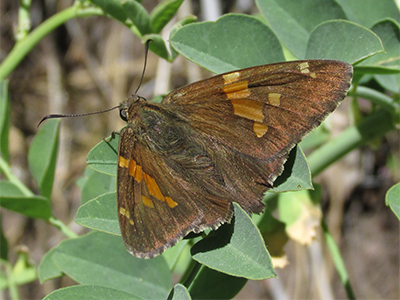
Look for silver spotted skipper butterflies in the Northern states early in June and several weeks, being found even in August. They fly very rapidly and are difficult to catch in action.
This species is widely distributed, occurring from ocean to ocean over nearly the whole of the United States. It extends into Canada.
Posts That Might Interest You:
Golden Backed Snipe Fly
Why Do My Tomatoes Have Dark Spots On Bottom?
Sharing Is Caring. Pin Me.
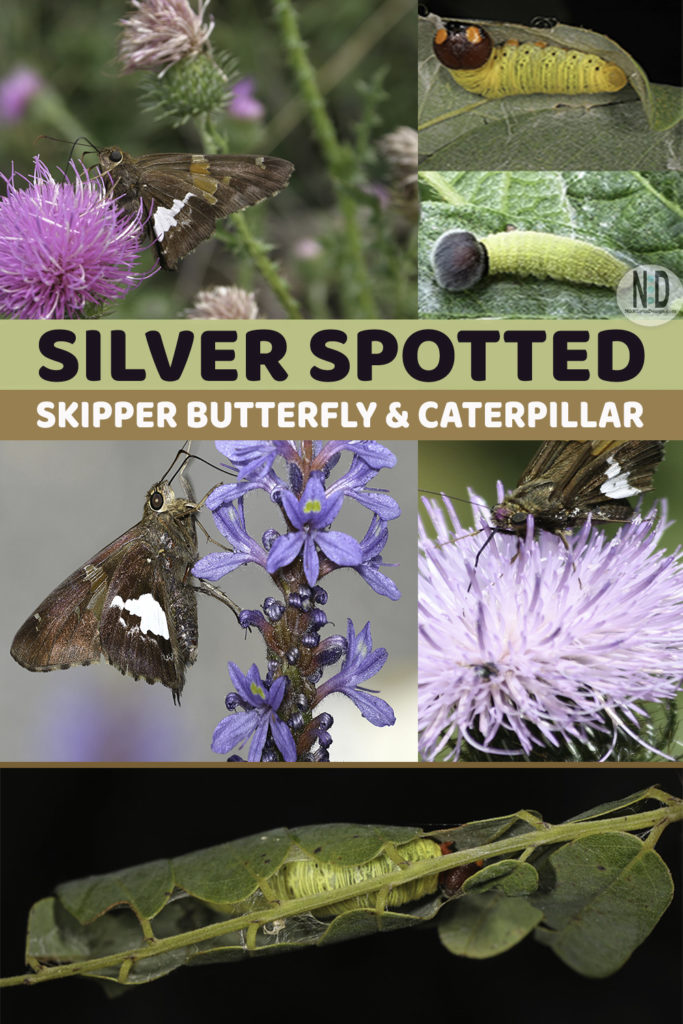
Photographic Prints
AFFILIATE POLICY: Posts on this site may contain links to outside vendors that pay me a commission when you purchase from them, at no additional cost to you. Thank you for supporting this site!
Photo credit on this page: Caterpillar in tent, Caterpillar with false eyespots,
